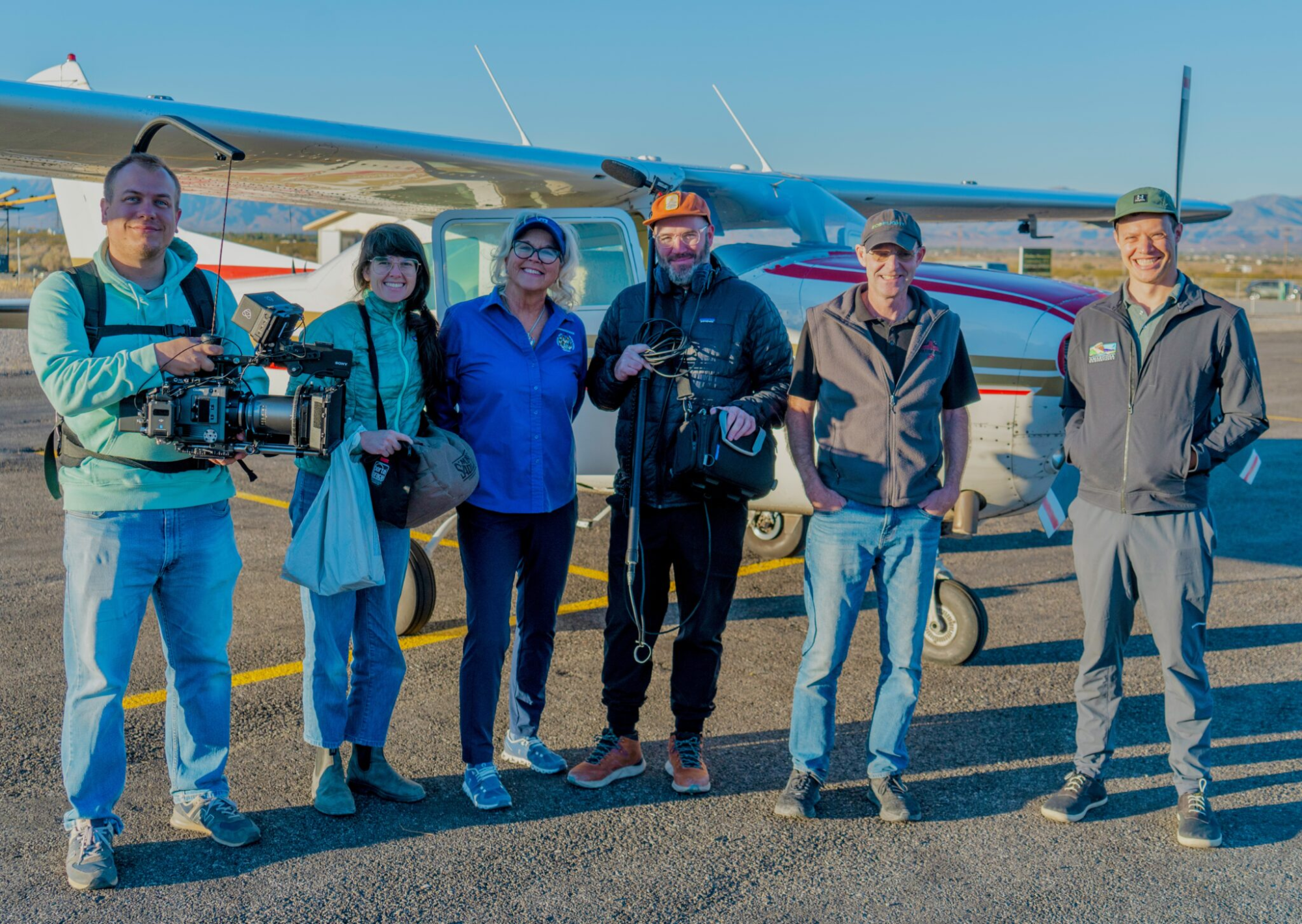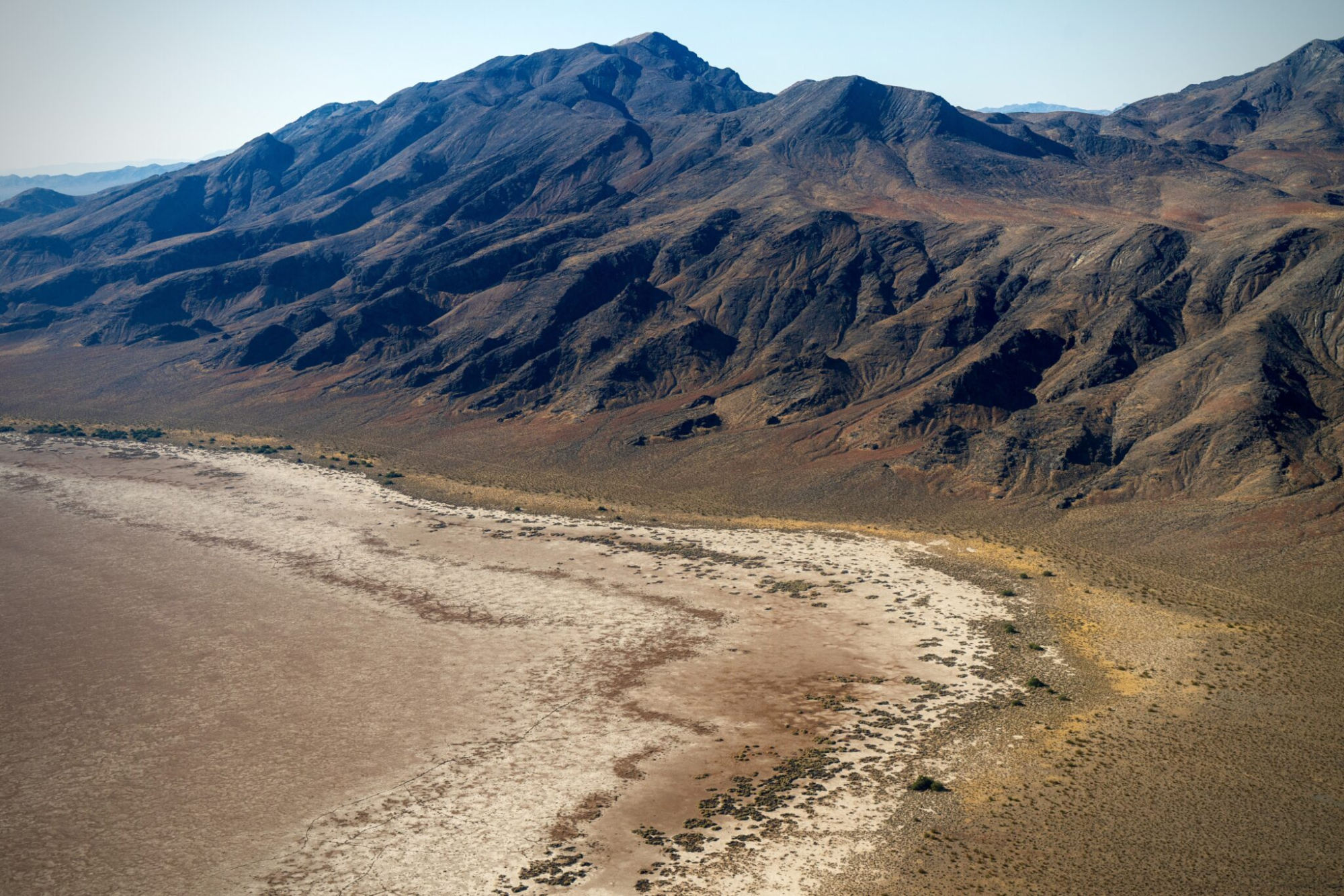

On a clear and windless October morning, I climbed aboard a Cessna 210 plane alongside Tribal and rural community leaders, journalists, land managers, and fellow advocates to experience something extraordinary: a flight over Ash Meadows and the Amargosa Valley.
EcoFlight is an organization that educates and advocates for the protection of remaining wild lands and wildlife habitat using small aircraft. EcoFlight commonly partners with organizations across the West like the Amargosa Conservancy to plan flights designed to teach elements of the natural history and ecology of the landscape while also identifying threats to habitat and natural resources on the ground.
Once aloft, I was struck by the way landscapes reveal themselves so differently from the air. In our daily work, we often see the Amargosa one piece at a time: a spring here, a wetland there, the sinuous river carving through mud hills and spreading out across floodplains. But from above, the full system comes into focus: basins so big they swallow the sky, their edges flanked by dark eroded ranges and veiny alluvial fans, Ash Meadows resting at its center like a beating heart, pulsing with an otherworldly vibrance. Big. Open. A vital part of the deep desert. A last vestige of our great American Outback.

A flight over such a place should be inspiring, and it was. I felt the familiar senses of awe and gratitude that such vistas never fail to produce wash over me as the wings of the plane tipped to show the mesmerizing curves of the Big Dune, the crenelated peaks of Death Valley’s Funeral Range, and the sparkling springs in the refuge. But from above, I was also freshly and deeply unsettled in seeing the locations proposed for potential extraction and industrial-scale operations on public lands. Gazing out across the valley, I could not help but imagine the profound impact they could have on this fragile landscape, if left unchecked.

The last year of our work in the region has been dominated by the push to defend this portion of the Amargosa River watershed from new extractive and industrial interests.
As our plane hummed southbound across the valley and toward Ash Meadows, I was reminded again of just how close Rover Critical Minerals came to getting away with a reckless drilling project just a stone’s throw from Fairbanks Spring. And yet a little over a year later, not only have no boreholes been drilled, but the communities of the region — many of their leaders seated in the plane next to me — have issued a loud and clear call for enhancing protections through withdrawing over 270,000 acres of this valley from new mining. Surreal, almost unbelievable, but true.
This same community has banded together now in recent months to push for a more balanced approach to solar energy development in the watershed than has been reflected in the Bureau of Land Management’s Western Solar Plan. We have educated and empowered local residents, appealed to decision makers, and issued joint protests in hopes that this valley may be spared from becoming an industrial wasteland. Looking out of my window, the land aglow in the low morning light, I pondered not for the first time that day what a balanced approach to this necessary energy transition looks like for landscapes like the Amargosa. They simply must get it right, lest the wild character of this place be lost forever.

At the time of this flight and of this writing, the Amargosa Valley remains for the most part a landscape yet unbroken.
Many people, including myself and the partners and community leaders seated next to me in the plane, have fought desperately to keep it so. Touching back down to the runway, visions of the valley still fresh in our minds, a shared but unspoken conviction hung in the air inside that Cessna 210: the Amargosa deserves an unbroken future.
I am grateful to the EcoFlight team for making this journey possible. To experience the Amargosa River from above reminds us of our shared responsibility to protect it and to safeguard its future. For those of us who advocate for this special place, seeing it from such a rare perspective is a renewed call to action—one that echoes long after the plane touches down.
